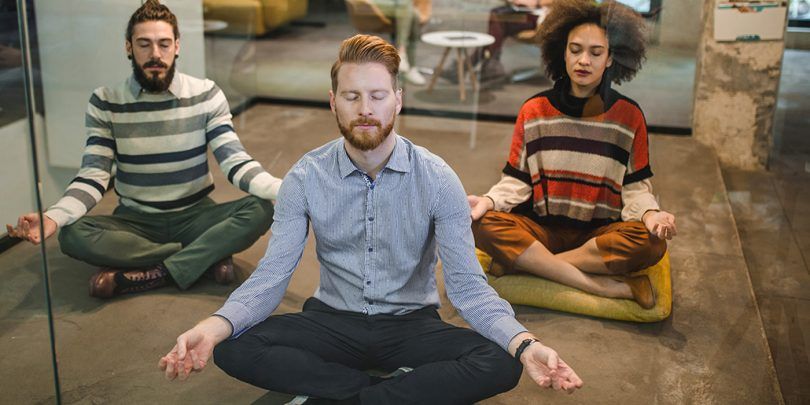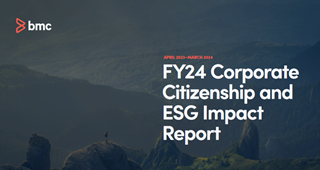As world events—and for some, how and where we work—continue to evolve, it’s a good time to check in and revisit helpful ways to ensure our own resilience and the resiliency of our people.
Tackling the increase in mental health challenges
The last few years have been rife with external and internal stressors and competing responsibilities, so much so that, according to the World Health Organization (WHO), 90 percent of countries folded mental health planning into their pandemic response. That’s good news, because the WHO also found that during the first year of the pandemic, the global prevalence of anxiety and depression increased by 25 percent, and a recent survey by the American Psychological Association revealed that 63 percent of adults said their life has been forever changed by the pandemic.
Businesses are taking note, too. A 2022 survey by WTW found that 86 percent of the employers surveyed are putting a focus on the mental health of their employees and forty-eight percent of respondents are planning or considering implementing an organization-wide behavioral health strategy and action plan. That’s up from the 35 percent that currently have one.
The responses are welcome, as new employee research shows that workers are concerned about their mental health on the job. According to Deloitte’s recently released 11th annual Global 2022 Gen Z and Millennial Survey, 46 percent of Gen Zs and 45 percent of millennials feel burned out due to the demands of their working environments, and “detrimental to their mental health” is one of the top reasons Gen Z and Millennial workers leave a job. More than half of those surveyed do agree, though, that their employers are increasing their focus on workplace well-being and mental health.
ADP’s People at Work 2022 study of workers across 17 countries found mental health to be a leading concern among its respondents, as 53 percent believe their work is suffering because of poor mental health. The better news is that 70 percent of respondents feel supported by their managers on mental health issues and75 percent feel they’re supported by their colleagues.
Establishing psychological safety
With so much going on in the world, and more research to back up the mental health ramifications for workers, more companies have recognized that supporting mental health is key to providing a holistic employer experience, as is creating safe spaces for employees to both ask for help and receive it without penalty.
Remote and hybrid work has been a safe space for many workers, and as the Great Resignation, or Reshuffle, continues, more workers have felt empowered to demand the continuation of the flexibility they gained during the pandemic. The aforementioned Deloitte Gen Z and Millennial study found that 49 percent of Gen Zs and 45 percent of Millennials already work remotely at least some of the time, and three-quarters prefer being hybrid or fully remote going forward. The ADP study found that 64 percent of global workers have already, or would consider, looking for another job if they had to return to the office full-time.
As with before the pandemic, it’s not just a matter of personal preference; it’s also a matter of psychological safety and avoiding in-person microaggressions that impact morale, productivity, and quality of life. An Axios-Harris Poll earlier this spring found that women and minority workers preferred—and felt more optimistic about their jobs—working outside an office setting. Fifty-two percent of women enjoy working remotely and would like to do so in the long term versus 41 percent of men. Fifty-two percent of Black workers and 50 percent of women found working from home was better for career advancement, and 63 percent of Black workers and 58 percent of women cite more ambition when working remote.
Another concern of leaving the safety of a remote situation is a fear of reprisals for showing—or an inability to show—one’s true self without negative consequences to self-image, status, or career. And if a whole team shares the same concerns about themselves, that can inhibit innovation by affecting the team’s ability to take risks.
How can employers help? For starters, maintaining pandemic-era flexibility and having open dialogues about the best path forward makes employees part of the conversation. Here at BMC, our People and Spaces team kept employees in the loop on return-to-office plans, and conducted polls about employee comfort level with doing so.
Whether virtual or onsite, employees must also be empowered to bring their authentic selves to work. Learn how to build inclusive workspaces and be a more inclusive manager and colleague so that you’re not part of the problem. We have some of our findings on that topic here. There are also many resources available to learn more about becoming an ally and safely taking a stand against discrimination in all its forms.
Building resiliency into your culture
We talk a lot about resiliency in business, but if our people aren’t resilient, too, then the company’s ability to survive and thrive is sort of irrelevant. So, what do we mean by resiliency? It’s the ability to navigate and surmount stressful situations and return to a calm emotional state. Resiliency is an adjunct to the psychological safety section above.
The biggest sign that resilience is missing is burnout. A 2022 Deloitte survey, Women @ Work: A Global Outlook, revealed that 53 percent of women say their stress levels are higher than they were a year ago, and 46 percent feel burned out, while 33 percent have taken time off for mental health challenges.
What can employers do to help? According to the Spring Health study called, aptly enough, Burnout Nation, improving benefits is a great first step. Twenty-four percent of employees said they want better mental health policies, 23 percent said access to free therapy, and 20 percent said better mental benefits. And 21 percent said even a mental health and wellness app would be beneficial.
Thirty-seven percent of workers surveyed by JobSage earlier this spring would like to see their employers offer workplace discussions on mental health, and 35 percent want training on subjects like stress management.
The good news is there are a ton of resources available to help workers step away from the keyboard, destress, and decompress, and for employers to bolster their mental health offerings, such as:
- The Center for Workplace Health recommends a variety of employer interventions to foster resilience, starting from the top down.
- There are apps for that.
- The American Heart Association, which recently awarded BMC Silver Level recognition for our “implementation of quality workplace health programs and culture of health best practices,” has established seven pillars of workplace health.
- The Centers for Disease Control has a Workplace Health Resource Center.
- The World Health Organization put together Doing What Matters in Times of Stress, a family-friendly, illustrated, multi-lingual printed and audio guide on healthy ways to combat stress.
- A recent Harvard Business Review piece has helpful tips on being a mental health ally, including role-playing conversations.
- If your company, like BMC, offers LinkedIn Learning coursework, there are several courses and webinars available that focus on mental health and wellness.
Asking for help
Sometimes the hardest thing to do is ask for help, but If you’re in a situation where self-directed tools aren’t enough, check in with your employee benefits provider to see what resources are available. And if you’re an employer, evaluate what you’re offering to your people. Make sure you’re doing as much for your people as you think you are, and build an empathetic culture that extends across your management. Employees who are made aware of and encouraged by their managers to use available resources are more likely to take advantage of them, and feel empowered to ask for flexibility and consideration when they need it.
The JobSage study found that 75 percent of workers have taken a mental health day—and 90 percent of them were able to fully relax—but 66 percent also felt guilty about doing it. According to the Deloitte Gen Z and Millennial study, 33 percent of Gen Zs and 35 percent of Millennials say they would not be comfortable speaking openly with their direct manager about stress, anxiety, or other mental health challenges. So, there’s still much work to be done in creating a culture of openness around mental health.
Focusing on mental health isn’t just important for your current staff, but your future hires, too. An increasingly younger workforce wants to know that they’ll be supported, not just with equitable pay and work-life flexibility, but also with expanded benefits—including mental health resources. Here at BMC, we prioritize our people every day, including with comprehensive health and wellness benefits and an employee assistance program for counseling resources and referrals. We also have several Employee Resource Groups (ERGs) that foster real talk on a variety of issues.
Feeling better by giving back is another way to help your people reduce stress. Research has shown that volunteering and doing good for others actually triggers an endorphin response, and we can all use more of that. The Trevor Project, Samaritans, and Crisis Text Line offer virtual volunteer opportunities and are some of my favorite organizations to work with.
Check with your HR department to see if your company has organized volunteering activities or includes floating time off for service days in your benefits package. Earlier this year, BMC held its first Martin Luther King Jr. International Day of Service, a volunteer time off day for our global workforce, which collectively contributed over 50,000 hours of community service supporting over 430 charities across 38 countries in a single day. That’s a whole lot of endorphins.
Conclusion
Achieving day-to-day resilience is often easier said than done, especially when so many stressors can be beyond our control. We can, however, choose how we respond. Employers can help by giving their employees the tools and resources to make better decisions about their mental health, and by building a culture of resilience into the workforce. People are the lifeblood of a business. Without them, corporate resiliency is not just irrelevant, but also impossible.







